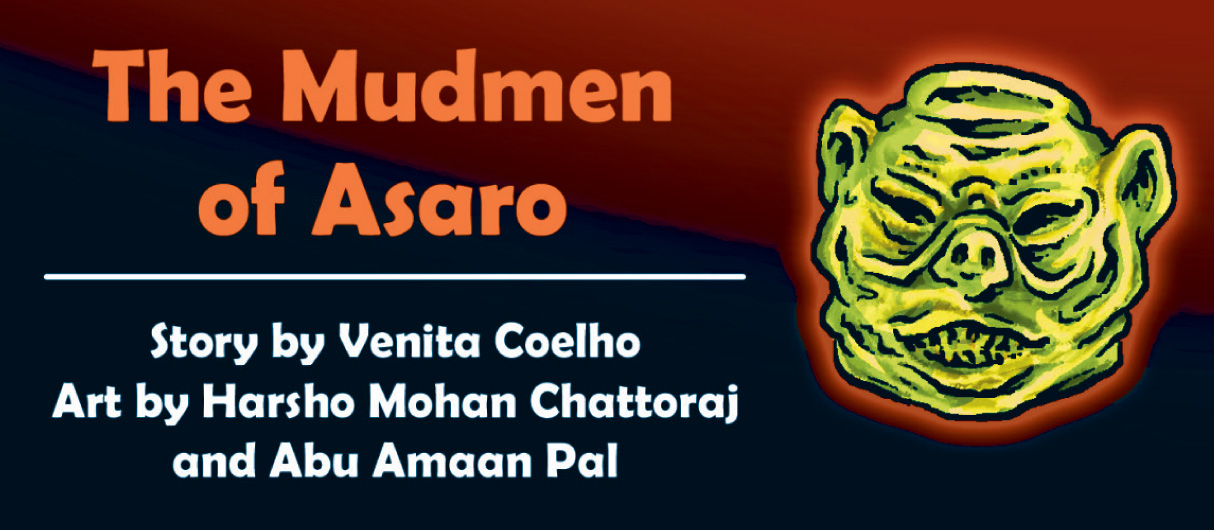
Vol 3 No 2 | Jul-Sep 2023
The Mudmen of Asaro
Story by Venita Coelho | Art by Harsho Mohan Chattoraj and Abu Amaan Pal
This story grew out of an idea pitched by artist Abu Amaan Pal, based on a little-known real-life story. Veteran writer Venita Coelho converted that into a rollicking tale full of tribal rivalry, mayhem, and cannibalism (almost but not quite). Harsho Mohan Chattoraj, another seasoned comics creator, illustrated the comic, and Abu Amaan assisted in the colouring. A complete team effort, not unlike the performances of the mudmen of Asaro.
The Mudmen Legend
How do you know something is a genuine cultural tradition or grown for tourists? Controversy surrounds the story of the ‘Mudmen’ of Papua New Guinea. Members of the Asaro tribe wear dramatic mud masks – but where exactly did the idea come from? The Mudmen themselves have a tale to spin about hiding in the river from the enemies who defeated them. When they emerged, covered with mud, the enemy thought they were ghosts and fled, giving them victory. Lovely story – but it seems to be just that! It appears to have been made up in 1957 for a cultural fair. In fact, two tribes are locked in a copyright battle for the right to wear the masks. After all – get a good enough tradition and you get the tourists pouring in.
https://www.geoex.com/blog/ghosts-of-papua-new-guinea/
https://www.bbc.com/news/world-australia-37481253
The Masks
The masks are made of clay from the river Asaro which flows through a remote part of Papua New Guinea. The masks are decorated with pebbles, shells, and pigs’ teeth. Each tribe has its own variations on the mask. The skin is painted white and elongated ‘fingers’ made of bamboo are also used to give a final effect that is very eerie.
Appropriate or Not?
The controversy over the legend of the mudmen underscores a basic conflict. Is a story like this local property, is it culture that can be protected by law, or is it public property that anyone can exploit? So visually striking are the mudmen that they have been appropriated and used in everything from commercials, to tourism promotion films to Hollywood movies.
Was the story made up to serve the needs of attracting tourism? In that case an individual or tribe can have copyright over it. Or did it grow over centuries as part of culture? In that case it belongs to no one, but neither is it open for anyone at all to exploit. ‘Cultural appropriation’ is a big issue. We rarely think about it when we plait our hair in dreadlocks or wear a native American headdress. But we are affronted when a western popstar decides to wear a bindi.
Turning another culture or religion into mere fashion or art statement can be disrespectful. As the world turns smaller and cultures and people mingle – it’s time to do some thinking on what is really appropriate. Don’t start making that mud mask yet!
https://www.researchgate.net/publication/38406125_The_Asaro_Mudmen_Local_Property_Public_Culture

